From the Hightstown Gazette August 7, 1997 by Curtis Crowell with 2019 updates with permission
Mr. George Sumbry’s home on Airport Road is surrounded by flowers, fruit trees, vegetables of all kinds that he and his wife Mayleen tend with dedication. The collection is extraordinary: fig trees that Mr. Sumbry has protected for years from the winter cold by covering with old carpets; canna lilies whose tubers must be dug up every fall so they can be stored indoors; salad greens, fruit trees; even peanuts, and tobacco plants he calls Nicodemus. Even the annuals reflect a degree of care that is remarkable. Mr. Sumbry collects the seeds from marigolds, Amaranthus, blue ageratum and others – even plants where the seed is almost too small to see and starts the seeds in late winter inside a small heated greenhouse in the back of his yard.
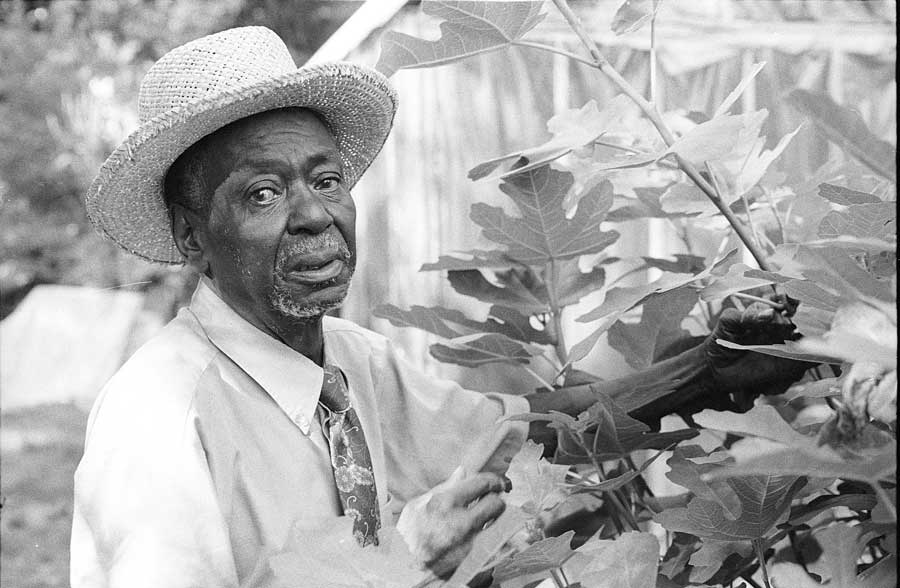
George Sumbry with his beloved fig tree.
The garden that surrounds the house has enticed many people to stop and chat with Mr. Sumbry who is often seen working in the garden wearing a huge straw sombrero that his daughter Marie says he has been wearing for years.
Mr. Sumbry’s story is just as remarkable as his garden, for his garden is the culmination of a long personal journey that helps to portray a part of this area’s past that is now only a memory to some: the seasonal migrant farming community that was once located on Airport Road.
Phenix City, Alabama: 1929
Mr. Sumbry’s journey to Airport Road began in Alabama in 1929, when at age 13 he left home with his older brother “LC” (as Louis Clyde Sumbry was known) to find work. (LC passed away in 1995 in Florida). Mr. Sumbry’s parents, Jake and Martha Sumbry were children of people who were formerly enslaved in this part of Alabama just across the Chattahoochie River from Columbus, Georgia. Mr. Sumbry was born there in 1916, one of sixteen children. The Sumbry’s owned some land in Phenix City, but with 16 sixteen children it was inevitable that they would spread out. George and LC would have started out at just about the start of the Great Depression, when farm prices plummeted, sending many small farmers into poverty and accelerating a great migration northward into urban areas from the South.
In those days Mr. Sumbry traveled by truck, transportation provided by the “bosses” who would supply farm labor to area farms. As part of the migrant work force these workers would follow the harvest up and down the East Coast. Later during the 30’s as the Depression worsened, the Dust Bowl years wreaked additional havoc on the Plains states, as small farmers there sold out in huge numbers and headed west.
Airport Road – 1930s
At some point Mr. Sumbry came into the area bordered by Cranbury, Jamesburg, Hightstown and Allentown. He says that during his travels he kept an eye out for places that appealed to him and something about this area he liked. In the South, Roosevelt’s New Deal was offering farmers a bounty not to plant certain crops or to plow them under in order to support prices for goods like cotton. This often meant the tenant farmers and sharecroppers would be out of work. The growing urban areas of the Northeast, in contrast, relied heavily on the outlying “truck farms” in areas like New Jersey for fresh produce, which meant that agricultural jobs were being shifted north.
To harvest their crops, which in this area were predominately potatoes, farmers relied on migrant laborers. There was a large seasonal community of migrant laborers centered about the west end of Airport Road in those days, and that is how Mr. Sumbry must have first come into the area. Mr. Sumbry says that in addition to farm work he found work at landscaping, working on the small railroads that still dotted the area – anything he could find.
Pearl Harbor, 1941
Mr. Sumbry recalls having been in Florida when he was drafted. Up until the Japanese attack, there had basically been no draft – or at least the Army had been picky about whom it would accept. After Pearl Harbor large numbers of American Blacks were drafted to meet the Army’s suddenly much greater manpower requirements, although the services were still segregated. Mr. Sumbry remembers being drafted shortly after Pearl Harbor was bombed. He recalls that in Alabama at the time of his birth, “they didn’t give out birth certificates to the colored,” so the Army had to write back to Phenix City to obtain his actual date of birth.
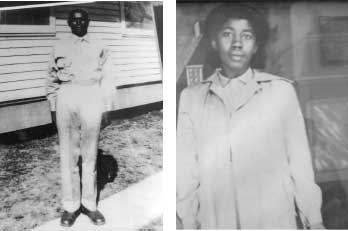
George in his World War II uniform and Evelyn Sumbry about age 20.
Mr. Sumbry does not recall more than a few years in the Army, where he served in a desert training center in California, but his daughter Marie recalls seeing his discharge papers showing that he was discharged in February 1946.
After leaving the Army Mr. Sumbry headed back to East Windsor, and in 1947 he purchased a plot with a small house on it toward the western end of Airport Road, where he still lives (this was written in 1997). With his late wife Evelyn he ran a small grocery store called “Sumbry’s Grocery” in the front of the house, while they raised four children. The original store was a small rectangular hand-built building that sat in front of the small house. Once the “Big House” was built, the front first floor room served as the store. After the store closed, that room was converted to the first floor living room. The second floor living room continued as such. “Ma’Daddy” attended the male dominated Apostolic Church next door to their house. “Ma’Mah” attended the female dominated Pentecostal Church around the corner which the children attended with her. (corrections added in 2019 by eldest son Aula).
Airport Road – 1950s
The description of this period of the history of Airport Road comes mainly from Mr. Sumbry’s four children: his oldest George, Jr. now Aula Maarufu Sumbry, born in 1949, followed by two sisters Marie and Margaret born in 1950, and a second son Nathaniel in 1951. Mr. Sumbry and his wife continued to operate the store, which catered to the large seasonal migrant population of Airport Road. As Aula tells it, the busloads of workers would stop at the store very early in the morning to pick up food for their lunch, then they would be driven off to the farms they were working that day.
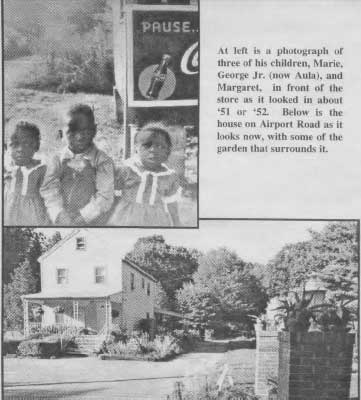
Clipping from original article. The top photo is of three of his children, Marie, George Jr. (now Aula), and Margaret. Lower photo is the house on Airport Road as it looked in 1997 when the article was written.
Mr. Sumbry in those days would do some farm work, including landscaping (a job he still does – look for his trademark straw hat and you might see him around town), but he also worked for a number of years at the Braun Greenhouses behind the old Hightstown High School on Stockton Street (now known as the Grace Norton Rogers School).
Aula remembers that the migrants also brought a certain amount of notoriety to Airport Road. The year-round population might have been 50 or 60, but during the farming season the population swelled to several hundred, many of them crowded into crude shacks and chicken coops. Most of them were blacks from southern states, but also the West Indies, the Carolinas, the Gullah Islands, and African countries as well. Among the permanent residents responsible adult men were treated as authorities and with respect to both them and their property.
The Tin Top and Joe West’s
Catering to the migrant population on Airport Road were two “Juke Joints”, (as in juke box) as the Sumbry children called them. Needless to say, they were forbidden to go near them. The juke joints were primarily frequented by migrant laborers.
On Friday nights when the migrants were paid in cash these places were pretty rough with local police often called in to quell the disturbances. East Windsor did not have its own police force at the time and the State Police from the Hightstown Barracks patrolled the area (Note the Hightstown Barracks location has moved several times, and is now actually in East Windsor, located on the corner Route 130 and Old Cranbury Road, in the area known as Cranbury Manor. [Note: – This building is currently vacant]. Prior to this the Barracks were on the second floor of Dey’s garage on the corner of Rt. 130 and Hightstown Princeton Road].
Aula remembered that one time there was only one black state trooper in New Jersey, who was stationed at the Hightstown Barracks. Aula and his brother and sisters, who had never seen a black police officer before, were in awe of the sight of this man driving his patrol car down Airport Road and would wave as he passed. Aula recalled that his name was Paul McLemore.
Mr. McLemore, now a practicing attorney in Trenton (this was 1997), recalls his days as a state trooper in the Hightstown Barracks. He pointed out that although the State Police were formed in 1921, he was the very first black officer in the state police, appointed in 1961 (apprx). “Airport Road in those days was famous”, he says, because of the constant need to break up fights and other problems at the two “gin mills.” The migrant population relied on the police to break up all kinds of disputes, and the police appear to have been the only symbol of authority these workers had. He recalled being appalled at the living conditions of the migrants, who were at the mercy of the area farmers who paid them very little.
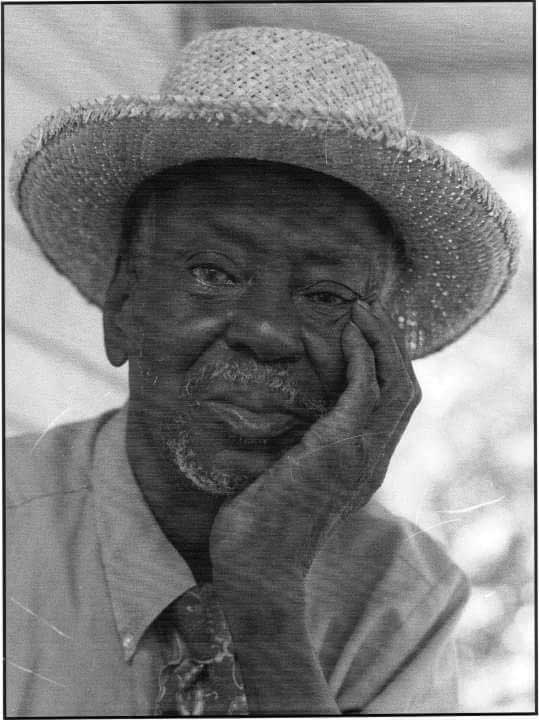
Mr. McLemore also recalled other black businesses in the area, such as Paul’s Inn located where the Club 8 now stands (little white building on Route 33 near Home Depot). Paul Davis (the proprietor) and his wife, who lived on North Main Street in the Borough, were famous for their food, and the other officers from the State Police barracks would send McLemore to pick up fried chicken and other dishes that the Inn offered.
The 1960s – an Era Ends
As the 1960s began, Edward R. Morrow of CBS broadcast a program called, “Harvest of Shame” about migrant farm workers in Florida. The program aired the Friday after Thanksgiving 1960, as part of a series of investigative programs called, “CBS Reports”. Immediately there was a large public outcry which focuses attention on the living conditions of the migrants. Mr. Sumbry’s children remember the Governor of New Jersey visiting the Airport Road community for a firsthand look at the living conditions of migrants in the area.
In the same time period, the Civil Rights Act was passed, and the Urban Renewal program was changing the face of downtown Hightstown. The two gin mills, the Tin Top and Joe West’s, didn’t last into the 1970s. The migrants stopped coming, and Mr. Sumbry closed the store that had been in the front of the house. His four children all grew up around the store, and they are all fond of saying that they “ate up all of the profits” – an opinion echoed by Mr. Sumbry himself.
Mention Airport Road to most residents and they think of baseball and soccer, and the roar of the speedway on Friday nights – memories triggered by the activities at the Police Athletic League fields and the East Windsor Speedway. The other memories of Airport Road are limited to those few who were aware of the seasonal migrant community located up the road a bit near where Sumbry’s Grocery operated. As the Centex homes go up in the area and new residents move in, the Airport Road area will change yet again.
The Next Sumbry Generation
This was written in 1997 and was further updated at the end of this article.
George Henry Sumbry and his late wife Evelyn (he has since remarried), raised four children on Airport Road. All of them speak fondly of their parents, and they speak of the time spent growing up as if it was almost another world, which in a way it was. All four graduated from college. Aula, the oldest, is a ceramic artist and lives in Twin Rivers (2019 – he has since moved). Marie one of the twin girls, is a medication aide at a continuing care retirement community in Houston; Margaret, who lives in Lakewood, is a senior rehabilitation specialist; Nathaniel, who came back to teach history at Hightstown High School before moving to Houston, is a supervisor in a juvenile probation department there in Harris County.
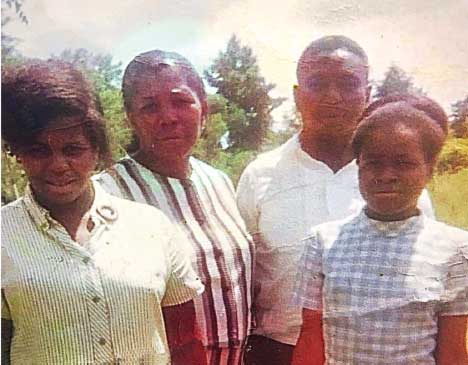
Evelyn, Margaret, George, and Marie.
Mr. Sumbry is well known by some of the older residents in the area, as is his reputation for honesty and hard work. It is hard to imagine what Airport Road used to be thirty and forty years ago, but harder still to imagine what it must have been like to set off to find your place in the world at age 13. Mr. George Henry Sumbry found his way to East Windsor and in the midst of a world changing so rapidly from the time of his birth until today (1997), and both Mr. Sumbry and the world itself show no sign of trying to slow down.
2019 Updates
by Cappy Stults from the family members
Mr. Sumbry passed on October 23, 1997, shortly after this article was published. His daughter, Pastor Margaret Sumbry-Draughn, 65, passed away in her home in Toms River, NJ on Oct 31, 2015. Her children are Thea Jackson-Byers, an Elementary School principal in Asbury Park; Michelle Jackson, deceased; Barry Kearney II, NJ Division of Youth and Family Services; Christopher Kearney, Administrator of the Delaware Department of Corrections.
Aula Sumbry is retired from his paid work as a “Community Specialist/Job Coach” for “Opportunity For All” which is a Community Resource Center for the New Jersey State Parole Board. He also served as a contracted independent counselor for the Administrative Office of the Court’s “Intensive Supervision Program.” He has had some health issues including a liver resection and kidney transplant, ending his “paid” work. But he has continued as a very active volunteer in the area community, including many awards. He has been the founder of the Trenton Afrikan Peoples Action School and Movement, and is currently Graduate Chapter Advisor to the Basileus On Community Issues and Affairs (Trenton). Has four children, Diallo, a University of the District of Columbia Administrator; Niambi, who is deceased; Nkenge Sumbry-Cunningham, a teacher in Washington, D.C.; and Aula II, a master’s degree student at Wagner University and a Twin Rivers resident.
Marie Sumbry Ceres, relocated to the Houston area in 1980. After pursuing a career as a medication aide and a nursing home aide, she retired. Currently, she’s active with her Jehovah Witness religion.
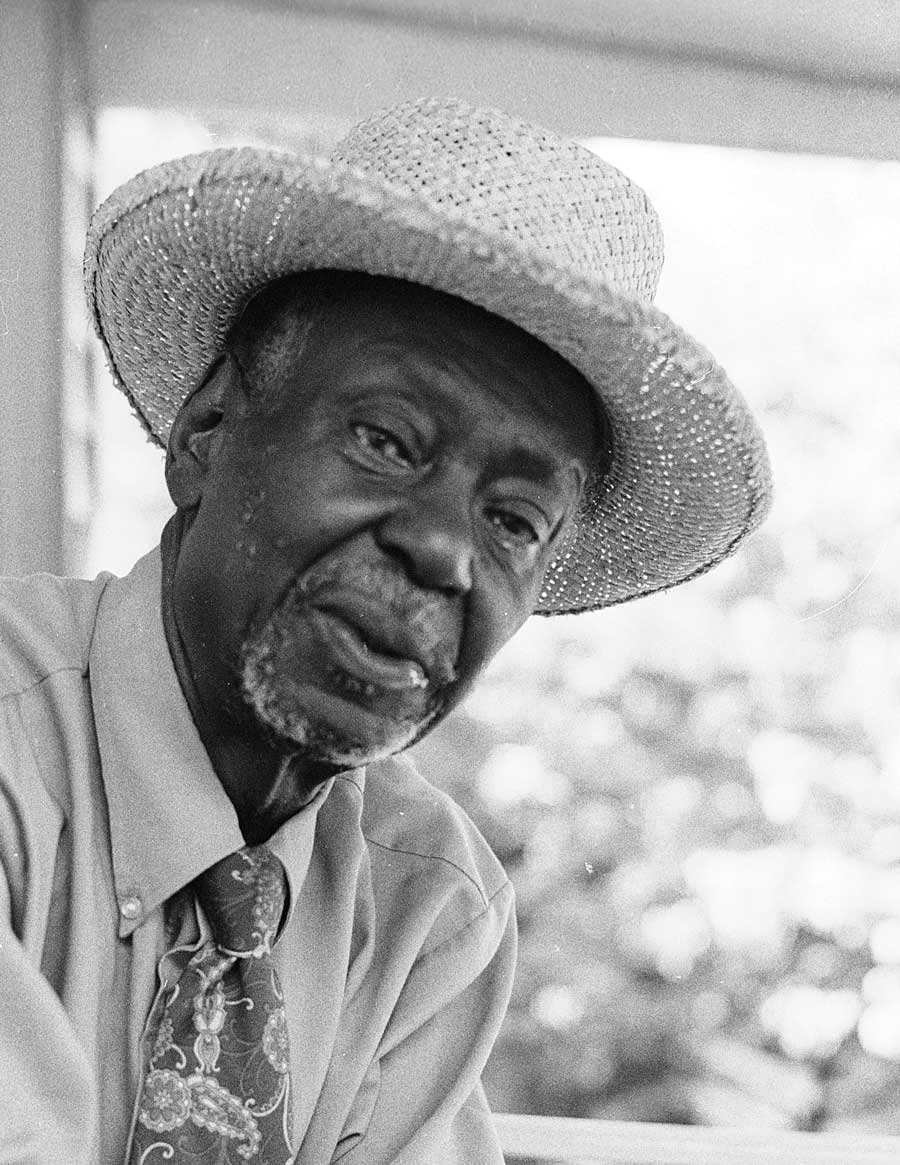
Nathaniel Sumbry – since he relocated to the Houston area 1977, he has worked as a Regional Field Services Administrator for the Harris County Juvenile Probation Department. After he retired from there in 2002, he became certified and taught social studies in grades 8 through 12. In 2010 he began a lifelong passion of gardening, and speaks with local church and school groups. His biological children are Uhura Sumbry, 48 years old police investigator, Liangu Sumbry, 45 years old independent truck driver, Bayana Sumbry-Taylor, 36, a curriculum administrator in the Houston Independent School District, Hasani Sumbry, 26 years old, an MBA accountant and preparing to take the CMA exam.
[Note: The Sumbry family contacted the Society after reading the East Windsor Township articles that mentioned Airport Road and the Speedway. They correctly pointed out that Airport Road had a more significant history than just the Speedway. The Society is embarking on a project to expand and memorialize information on the Sumbry and other black families of Hightstown and East Windsor that were a significant part of our history. We are looking for volunteers to assist in this project. Contact the cstults@allenstults.com.]
Support local history like this by becoming a member here.
